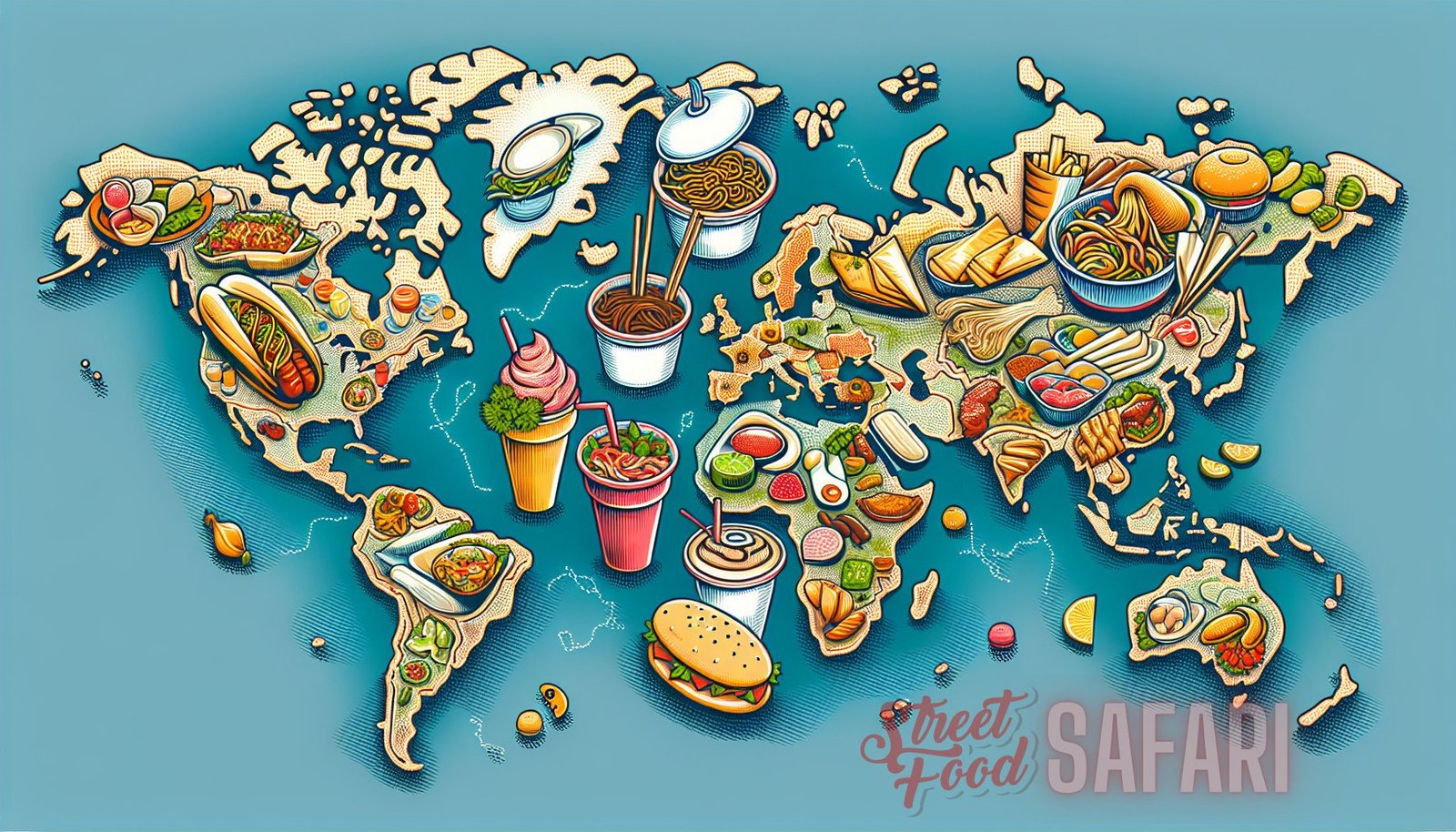Introduction
Street food has long been an integral part of culinary culture around the world. From bustling food carts to vibrant night markets, the streets offer a unique experience for food lovers seeking a taste of local flavors. In recent years, a new trend has emerged in the world of street food – culinary fusion. This intricate blend of flavors and cultural influences has transformed street food into a vibrant and exciting culinary adventure. In this article, we will explore the art of culinary fusion in street food and delve into the fascinating world of food fusion.
The Rise of Food Fusion
Food fusion can be traced back to ancient times when culinary trade and cultural exchange played a significant role in shaping cuisines. However, in recent years, globalization and the rise of travel have facilitated the rapid spread of culinary influences, leading to an explosion of fusion cuisine.
Cultural Influences
Culinary fusion is all about the marriage of different culinary traditions, ingredients, and cooking techniques. It is a reflection of the cultural diversity and interconnectedness of our modern world. As people migrate and travel more than ever before, flavors and recipes are shared, assimilated, and reinvented, resulting in a beautiful tapestry of global cuisine.
The history of cultural exchange and assimilation in food can be seen in the Silk Road, which acted as a major trade route between Asia and Europe. Along this ancient trading network, spices, herbs, and cooking techniques were exchanged, leading to the fusion of flavors from different cultures.
Globalization and Technology
Globalization has played a pivotal role in the rise of food fusion. The ease of travel and the interconnectedness of our world have allowed people to experience different culinary traditions firsthand. This exposure has inspired chefs and food lovers to experiment with blending flavors and techniques from diverse cultures.
Furthermore, advancements in technology and transportation have made it easier for ingredients to travel across continents, further fueling the culinary fusion movement. Ingredients that were once considered exotic are now readily available, allowing chefs and home cooks to create innovative and fusion dishes.
Exploring the Intricate Blend of Flavors
One of the most fascinating aspects of culinary fusion is the intricate blend of flavors that can be found in street food around the world. Let’s dive into some popular examples of food fusion and explore the unique flavors they offer.
Korean-Mexican Fusion: The Birth of the Korean Taco
One notable example of culinary fusion is the Korean-Mexican fusion, which gave birth to the Korean taco. This mouthwatering creation combines the bold and spicy flavors of Korean cuisine with the familiar format of a Mexican taco.
The Korean taco typically features marinated grilled meat, such as bulgogi or spicy pork, served on a tortilla and topped with Korean-inspired slaw, kimchi, and spicy sauces. The result is a harmonious blend of Korean and Mexican flavors that has taken the street food scene by storm.
Indian-Chinese Fusion: Exploring the Hakka Noodles
In India, a unique blend of Indian and Chinese flavors has led to the creation of a popular street food dish called Hakka noodles. This fusion dish combines the stir-frying techniques of Chinese cuisine with Indian spices and ingredients.

Hakka noodles are typically made with wheat noodles, stir-fried with a mix of vegetables, meat, and sauces. Indian spices like cumin, coriander, and turmeric are added to the dish, giving it a distinctly Indian flavor. The result is a delicious and addictive fusion of Indian and Chinese culinary traditions.
Japanese-Brazilian Fusion: Savoring the Temaki Sushi
The fusion of Japanese and Brazilian flavors has given rise to a unique street food dish known as the temaki sushi. This fusion dish combines the traditional sushi roll with Brazilian ingredients and flavors.
Temaki sushi features a cone-shaped seaweed wrap filled with sushi rice, fresh fish, vegetables, and unique Brazilian ingredients like avocado, mango, and cream cheese. The combination of Japanese sushi techniques with Brazilian ingredients creates a delightful fusion of flavors that is both refreshing and satisfying.
The Cultural Significance of Culinary Fusion
Culinary fusion goes beyond the mere combination of flavors. It is a reflection of our evolving cultural landscape and the increasing interconnectedness of our world. Let’s explore the cultural significance of culinary fusion in street food.
Celebrating Diversity
Culinary fusion celebrates the diversity of our global society. It brings together different cultures, traditions, and ingredients, showcasing the rich tapestry of human experience. Through food fusion, we can learn about other cultures, traditions, and cuisines, fostering a deeper understanding and appreciation for our global community.
Preserving Cultural Heritage
Food fusion allows us to preserve cultural heritage by blending traditional flavors with modern influences. It breathes new life into ancient recipes and cooking techniques, ensuring that they remain relevant and accessible to future generations. Culinary fusion acts as a bridge between the past and the present, preserving the cultural heritage of different communities around the world.
Encouraging Cross-Cultural Dialogue
Food fusion encourages cross-cultural dialogue and creates opportunities for cultural exchange. Street food has traditionally been a melting pot of cultures, where people from different backgrounds come together to enjoy a shared culinary experience. Culinary fusion takes this dialogue a step further, allowing chefs and food lovers to engage with each other’s culinary traditions, exchange ideas, and create new and exciting dishes together.
Conclusion
Culinary fusion has transformed street food into a vibrant and exciting culinary adventure. From Korean-Mexican tacos to Indian-Chinese Hakka noodles, the intricate blend of flavors and cultural influences in street food exemplifies the interconnectedness of our world. Food fusion celebrates diversity, preserves cultural heritage, and encourages cross-cultural dialogue, making it a significant and fascinating aspect of our global culinary culture.
Through culinary fusion, we can explore new flavors, learn about different cultures, and gain a deeper appreciation for the art of food. So, whether you’re exploring a local street food market or experimenting with fusion recipes in your own kitchen, embrace the magic of culinary fusion and embark on a delicious journey of flavors and cultural exploration.
For more information on street food and its cultural significance, check out these articles: – Street Eats Journey – Discover the Rich Cultural Significance and Delightful Flavors of Street EatsNow that you’ve learned about the art of culinary fusion, why not try creating your own fusion dish at home? Let your creativity run wild and allow different flavors and cultures to inspire you in the kitchen. Remember, food fusion is all about exploring new possibilities and celebrating the vibrancy of global cuisine. Bon appétit!


